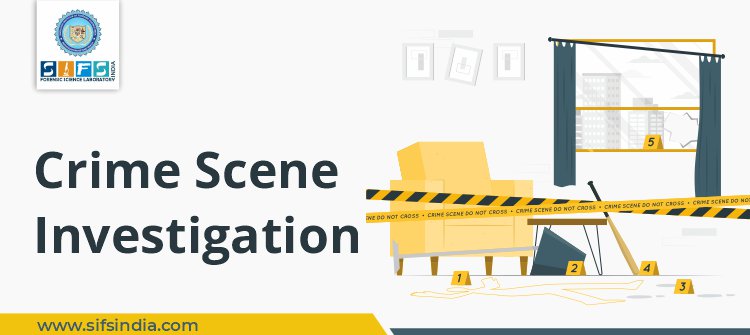A crime scene investigation involves a detailed analysis of the crime scene, including documentation, photography, handling, and collection of physical evidence such as fingerprints, footwear impressions, hair, strands, natural liquids, and other materials for investigation and crime scene reconstruction purposes.
SIFS India’s crime scene investigation services for law enforcement stand as a beacon of forensic expertise. Our skilled and experienced forensic experts carry out meticulous examinations of the crime scenes to extract crucial evidence that forms the foundation of criminal investigations.
Services Our Organization Provides:
Trace Evidence Analysis: It involves identifying evidence that cannot be seen with the naked eye to decipher hidden clues to link suspects to crime scenes.
Evidence Collection: Physical, biological, and chemical evidence is meticulously gathered for systematic investigation.
Crime Scene Reconstruction: It involves creating a detailed and accurate representation of the sequence of criminal events using evidence.
Accident Investigation and Reconstruction: Scientific methods are used to analyze and reconstruct incidents to understand causative factors.
Investigation of Rape and Murder Cases: Forensic techniques are used to gather evidence, taking into account the sensitive nature of rape and murder cases.
Suicide and Homicide Cases: Forensic methodologies are used to investigate the truth behind killings and their impact on affected parties.
Bloodstain Pattern Analysis: Bloodstains found at crime scenes are interpreted, including their size, shape, and location, to recreate the actions responsible for the bloodshed.
Infanticide Investigation: Forensic techniques are employed to solve cases involving the killing of the newborn and to study the circumstances surrounding these tragic events.
Investigation of Hit-and-Run Cases: Investigators gather evidence like witness and victim statements, incident scene photographs, and video footage to reconstruct scenes.
Crime Scene Photography: It involves capturing the crime scene through photography for the visual record required for documentation, analysis, and courtroom presentations.
Sketching of the Crime Scene: Detailed sketches of crime scenes are created for visual narrative purposes and for a comprehensive understanding of the incident.
Videography of the Crime Scene: Videography of the crime scene is done to document it in real-time for thorough analysis and courtroom proceedings.
Crime Scene Documentation: Crime scenes are documented to compile detailed records for forensic analysis and investigative proceedings.
Crime Scene Preservation: Preservation techniques are employed to prevent contamination of the crime scene and enhance the longevity of critical evidence.
Fire Forensic Investigation: The investigation of fire incidents is carried out to determine the origin, cause, and nature of fires through scientific analysis.
Shooting Incident Reconstruction: Specialized forensic techniques are used to analyze ballistics evidence and recreate the sequence of events.
Toolmarks Examination: It involves identifying specific tools used by examining toolmarks and connecting them to potential suspects.
Drug Analysis: A detailed screening is done to identify the presence of illegal drugs and their types and quantities in the collected substances.
Physical Impression and Footwear Analysis: It involves examining distinctive patterns made by the outsole of the footwear to help link a suspect with the crime scene.
Fingerprint Lifting from the Crime Scene: All types of fingerprints left at crime scenes are collected, preserved, and examined to identify individuals who might be involved in the crime.
Digital Evidence Collection from the Crime Scene: Cutting-edge techniques are used to collect digital evidence, including data from electronic devices, to look for technological clues.
Collection of Physical Evidence: It involves collecting and preserving physical evidence like knives, guns, shirts, bodily fluids, bullet casings, glass pieces, fingerprints, etc. from crime scenes for forensic analysis.
Collection of Biological Evidence: It involves collecting, preserving, and analyzing biological evidence like semen, blood, hair, and other fluids to identify individuals present at the crime scene.
Collection of Chemical Evidence: It includes gathering and examining chemical evidence, including inflammable materials and drugs, to gain insights into the circumstances surrounding crimes.


